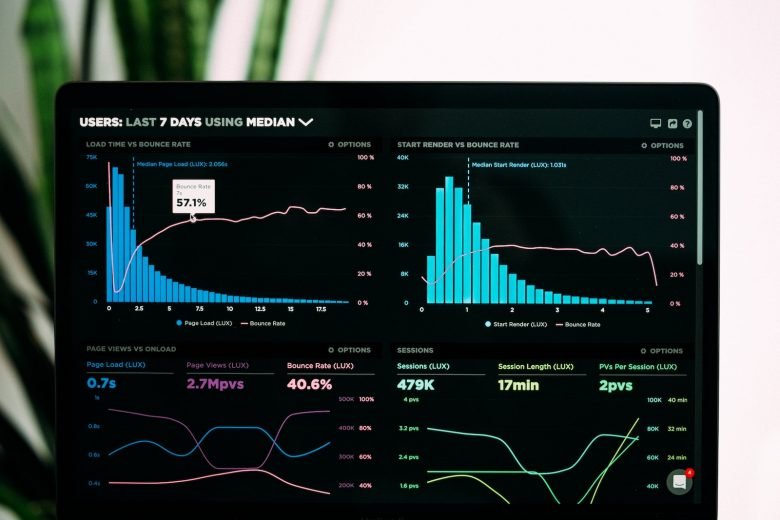System monitoring is important for performance, cost control, and security. We explain the finer points of application monitoring.
IT systems run themselves. Cloud-based systems don’t even need to be installed. As an IT manager, you might think that you can just set things up, give users access to them, and then move on to some other task. However, were that the case, large businesses wouldn’t go to the expense of running IT operations departments.
If your applications stop working, your entire business will grind to a halt. If those applications form part of your business’s sales delivery mechanism, such as with Web applications, then every moment that the application is offline represents lost income.
Here is our list of the five best application monitoring systems:
- AppOptics EDITOR’S CHOICE This SaaS platform links together infrastructure and application monitoring to provide full dependency mapping and root cause analysis. This package includes distributed tracing and code profiling. Get a 30-day free trial.
- ManageEngine Applications Manager (FREE TRIAL) This package traces all the supporting modules for your user-facing applications, builds a map of those dependencies, and monitors the performance of every element. Available for Windows Server, Linux, Azure, and AWS. Start a 30-day free trial.
- Datadog APM A SaaS platform that offers its APM with or without a code profiler. Get dependency mapping, root cause analysis, and distributed tracing.
- Dynatrace Full-stack Monitoring This AI-based SaaS package offers infrastructure and application monitoring plus digital business analytics
- New Relic An innovative and extensive SaaS platform with 16 monitoring packages all included in the price.
Read Also: The 3 Best Ways To Get Your Application Launched Quickly
What is Application Performance Monitoring?

Application Performance Monitoring (APM) tracks the availability and usage of apps in your organization. The goal of APM is to detect issues and resolve problems with applications before they impact productivity. For example, if a particular application is experiencing delayed load times, your APM would generate an alert, analyze the issue, and suggest an appropriate response.
Application monitoring tools are used to continuously scan your entire network of apps for issues with speed, usability, security, and more. Application performance monitoring is a proactive process that helps you avoid downtime and other potential problems with business-critical apps.
Read Also: Eduuolvera.com – Ultimate Resource for Download APK for Android
Why Monitoring Your Applications is Important
Effective application management and performance monitoring prevent a host of issues that could impact business productivity. The 4 key reasons to monitor your applications include:
1. Issue Detection and Resolution
Application monitoring tools enable businesses to detect issues within their applications, including errors, slow response times, and downtime. By identifying these problems, you can take steps to resolve them quickly, preventing business disruption and lost revenue.
2. Improved Performance
Application performance monitoring is important to help you identify where key software is underperforming. By analyzing metrics such as response time and throughput, businesses can make data-driven decisions about how to optimize, upgrade, or switch SaaS apps.
3. Enhanced User Experience
With application monitoring, businesses can gain insights into how employees interact with everyday applications. By monitoring user behavior, you can identify common pain points, provide targeted training, fill any user experience gaps, and eliminate underperforming software.
4. Robust Security
Application performance monitoring is critical to identify security vulnerabilities and address threats. By monitoring for unusual activity and unauthorized access attempts, businesses can detect and respond to potential breaches and ensure SaaS application security.
Application Monitoring Tools and Software
Application monitoring tools help to consolidate your overview of all business apps and take action when their performance deems necessary. Here’s what to look for in application monitoring software:
1. Tracking and Diagnosis
Your application performance monitoring tool should be able to quickly identify and diagnose issues that impact performance, such as slow response times, high error rates, and resource utilization problems. Ensure your APM tool includes performance alerts to allow for a timely response.
2. Root Cause Analysis
When an issue is identified, your application monitoring software should provide a detailed root cause analysis. Beyond just resolving the initial problem, this also allows you to address the fundamental cause and prevent it from recurring.
3. Performance Metrics and Reporting
Choose an application performance monitoring tool that presents you with easy-to-digest data visualizations and actionable reports. This should include your benchmark performance metrics, insights into current operations, and predictive analytics.
Read Also: 5 Essential Tips for Building a Scalable Web Application
5 Application Monitoring Best Practices
Follow these application monitoring best practices to boost your app performance and security.
1. Define Your Objectives
Before implementing application performance monitoring, define your goals and objectives. Identify the key performance metrics you want to track and set clear expectations for application performance.
2. Select the Right Application Monitoring Tool
Select an application monitoring tool that aligns with your organization’s needs and goals. Look for a solution that offers real-time monitoring, root cause analysis, and actionable reports.
3. Stay Alert
Don’t set and forget your application monitoring strategy. Check performance updates regularly and enable alerts so you can act quickly in the event of a problem. App monitoring works best when you are responsive to identified problems.
4. Act on Data
Use your application performance data to make informed business decisions on future app requirements and streamline your current tech stack. Actively review your reports for new insights or deviations in performance.
5. Continuously Optimize
Take steps to continuously optimize app performance and your employees’ user experience. Focus on any patterns and anomalies in application behavior and work to eliminate recurring issues.
The Best Application Monitoring Systems
Our methodology for selecting an application monitoring system
We reviewed the market for application monitoring systems and analyzed tools based on the following criteria:
- Automatic discovery
- Application dependency mapping
- Monitoring for hybrid systems
- Distributed tracing for microservices
- Code profiling for Web applications
- A free trial or a demo package that enables a no-cost assessment
- Value for money is represented by a full mapping, tracing, and monitoring tool that is offered at a reasonable price
With these selection criteria in mind, we identified excellent application monitoring services that keep up with the latest technology and provide predictive warnings to head off disasters.
AppOptics (FREE TRIAL)
AppOptics is a cloud platform that offers two modules. The first of these is the Infrastructure Monitoring service. This provides monitoring for on-premises and cloud servers, plus virtualizations and containers. The service identifies all of the systems that support your primary applications.
The second module of the AppOptics system is Application Monitoring. In this package, you get distributed tracing and code profiling. You need both modules to fully track the performance of your applications and fortunately, the top plan of AppOptics provides just that.
Key Features:
- Hybrid systems
- Distributed tracing
- Code profiling
- Server cloud platform
- Virtualizations and containers
Applications can be built up from modules written in different languages and developed on different platforms. This results in a kaleidoscope of code that many APMs can’t cope with.
AppOptics can trace through systems written on Java Virtual Machine (JVM), .NET, and WCF it understands PHP, Python, Ruby, and Node.js. The monitor automatically detects the system in which each segment was written and adjusts its scanning techniques as it progresses through the code.
This service will discover your applications and their underlying services, creating a dependency map and providing continuous monitoring with a range of techniques. The console has a series of performance expectation thresholds, which you can adjust and add to. These automate application monitoring because you don’t have to sit and watch the console on the off-chance that something bad might happen – you’ll be notified if it does.
Pros:
- A SaaS platform with storage for metrics
- Application dependency mapping with root cause analysis
- Performance tracking down to server and cloud platform resource availability
- Distributed tracing and code profiling
- Alerts for automated, unattended monitoring
Cons:
- Doesn’t include network monitoring
AppOptics is our top pick for an application monitor because it identifies all related modules, services, and resources and tracks their activities as applications run. This service can scan through the code of Web applications, highlighting each line as it is reached. The service will give you the exact line of a function that is causing problems when issues arise, switching to the dependency map, you can see immediately, which resources were involved and speed up your resolution. The tool will alert you if a problem arises so you can get on with other tasks, knowing that everything is running smoothly.
ManageEngine Applications Manager (FREE TRIAL)
ManageEngine Applications Manager is a software package that can trace all of the supporting modules that contribute to a user-facing system. These applications could be standalone software packages, elements in websites, or even the Web applications that your company develops.
The Applications Manager tracks each element of an application no matter where it is run, which means your software might be dependent on a function that is executed on another server, owned by someone else. The service uses a system called distributed tracing to gather operational statistics from each module as it executes. If the system is written in a plain text programming language, such as Java, .NET, Ruby, Python, or PHP, the Applications Manager will even step through the code as it runs and identify the current line when a problem occurs.
Key Features:
- Application dependency mapping
- Distributed tracing
- Code profiling
- Root cause analysis
The tracking function of Applications Manager means that the monitoring tool knows exactly which module behind your user-facing apps was running at the time that a problem occurred. This means that as soon as a performance issue arises, you can pinpoint the issue straight away. This allows you to assess whether the error was caused by a software coding error or a physical resource shortage.
The module monitoring system is a useful tool for development teams as well as for operations technicians. It enables managers to assess plug-ins and APIs before fully integrating them into a new application and acceptance testing can ensure that the new code is fault-free. The package includes synthetic monitoring tools to verify new code and real user monitoring to watch over performance once a Web application is live.
Pros:
- Useful for module verification before development
- Synthetic monitoring for unit testing
- Ongoing Web applications monitoring
- Monitoring for services and server resources
Cons:
- Not a SaaS package
ManageEngine Applications Manager is available in three editions. The first of these is Free, which is limited to monitoring five resources. The Professional edition is the base package for the paid system and the Enterprise edition has a greater capacity to meet the needs of large corporations. The software for all three editions runs on Windows Server or Linux. It is also possible to access the system as a service on AWS or Azure. You can get a 30-day free trial of either the Professional or Enterprise edition and if decide not to buy at the end of that period, your software switches over to the Free edition of the Applications Manager.
Datadog APM
Datadog APM is delivered from a cloud platform of system monitoring and management tools. The Datadog team is very active and is evolving its systems constantly. The APM system is now very heavily based on distributed tracing and the tracking of Web application performance. Much of the traditional application performance monitoring that used to be part of the APM has been moved into the Infrastructure module.
If you need application monitoring for systems such as databases or Web servers, you will find that functionality in the Infrastructure Monitoring tool. The best solution is to get both the Infrastructure and the APM system. Add on Network Monitoring and you have full stack observability.
Key Features:
- Autodiscovery
- Dependency mapping
- Service Catalog
- Distributed tracing
As well as performing distributed tracing and application dependency mapping, the Datadog APM has a deployment tracking feature. This is great for businesses that create their applications or combine third-party systems and need to trial different environment settings before fully rolling out the service.
Code Profiling is offered in a higher plan that still gets you the standard APM features. This will scan through code written in Java, .NET, PHP, Node.js, Ruby, Python, Go, or C++ as it runs.
Pros:
- Application dependency mapping that can link through to infrastructure
- Optional code profiler
- Data retention for historical analysis
- Alerts for performance problems
Cons:
- Many application monitoring services have been shifted to a separate module
You sign up for the Datadog system at the service’s website and access its console through any standard Web browser. You can get a 14-day free trial of the entire platform, which will help you to decide exactly which modules you need to subscribe to.
Dynatrace Full-stack Monitoring

Dynatrace is a SaaS platform with a list of modules. Accessing the Full-stack Monitoring package gets you infrastructure monitoring as well as the APM. You also get AlOps features that can predict resource shortages and potential access clashes.
Read Also: Building Powerful Applications with Low Code Software
Key Features:
- Dependency mapping down to the server
- Distributed tracing and code profiling
- AI-based root cause analysis
The Dynatrace platform also offers security monitoring and digital experience monitoring. As it is a SaaS package, the Dynatrace Full-stack monitoring stores all of its gathered metrics for manual historical analysis. It also gathers system logs and stores those for examination. The distributed tracing and code profiling services in the bundle also generate their log files that contribute to the analytical pool.
Pros:
- Suitable for development and operations support
- Mixes a range of observability strategies
- Provides predictive alerts for resource issues
Cons:
- Full log management costs extra
New Relic
New Relic delivers “full stack” observability in its SaaS package because it has everything from application discovery, dependency mapping, distributed tracing, real-time code profiling, and infrastructure monitoring. The service goes on to provide network monitoring, container, and virtualization tracking, plus machine learning for its alerting system.
Key Features:
- Application dependency mapping
- Full-stack observability down to the network
- A complete system monitoring package
The New Relic service is priced per user and not per server, so its full range of services is available equally to the smallest business as well as to very large organizations. The service offers a bug tracker, plus synthetic web application testing for operations teams. You are allowed one user account for free forever, which is useful for assessment.
Pros:
- AI-driven application scanning
- Predictive alerts
- Data retention for analysis
Cons:
- All of the functions take a lot of training to exploit
Struggling with Application Performance Monitoring?
As your business scales, your tech stack tends to grow with it. Monitoring the performance of each app individually is time-consuming and labor-intensive. But, without effective application monitoring, you can quickly run into problems with critical business operations. Want to learn more about simplifying your application performance monitoring?
Summary
App monitoring is another essential piece of the puzzle to ensuring your infrastructure stays operational, you know how your applications are running, how they’re being utilized, and how they’re growing. With this data, you can more easily plan equipment acquisition, find problems with your applications easier, and know that your clients can complete their transactions smoothly.
Don’t forget or neglect this crucial piece of IT infrastructure. When you’re in a bind, your application monitoring package will probably save you bacon.




Leave a Reply